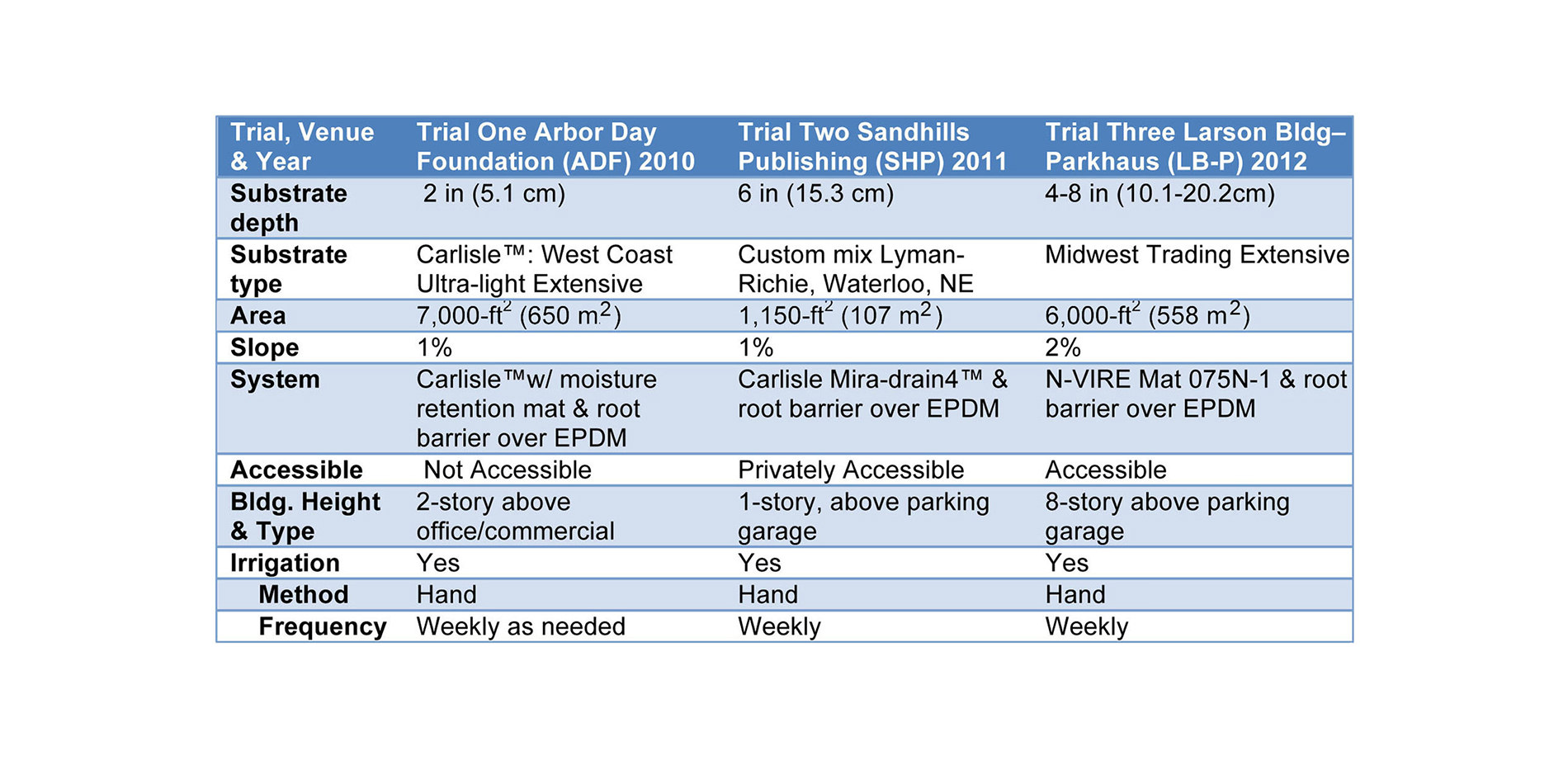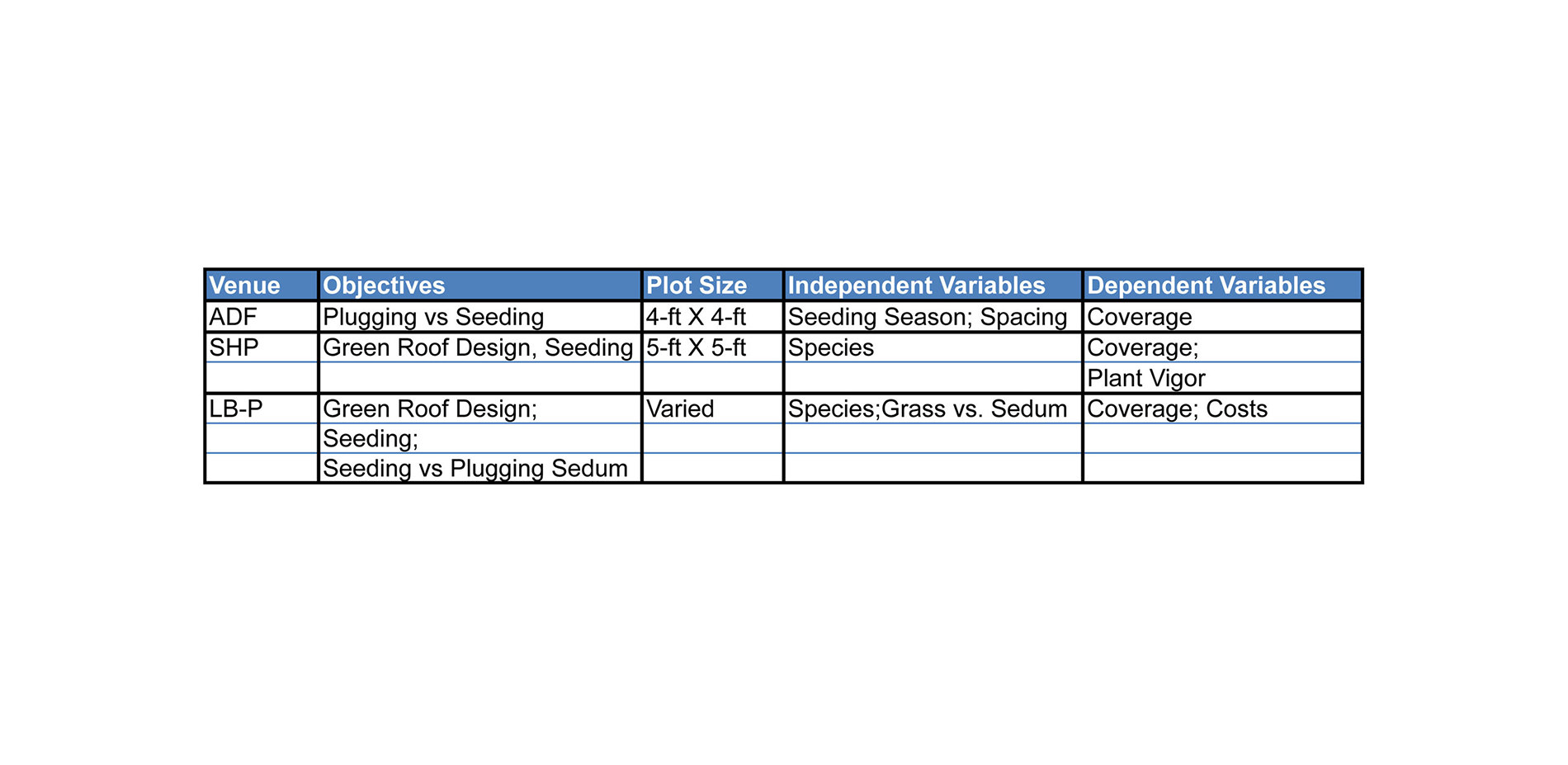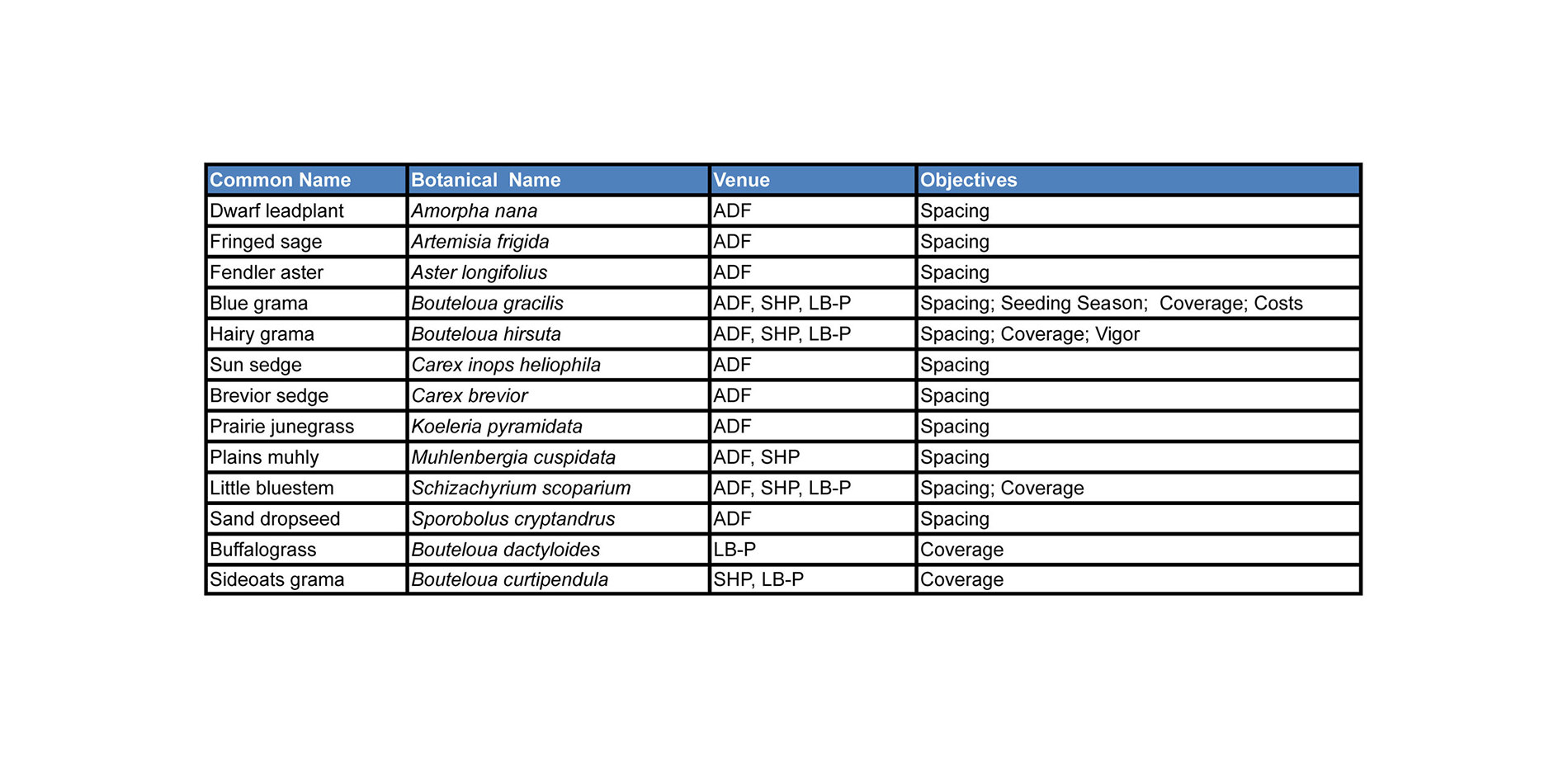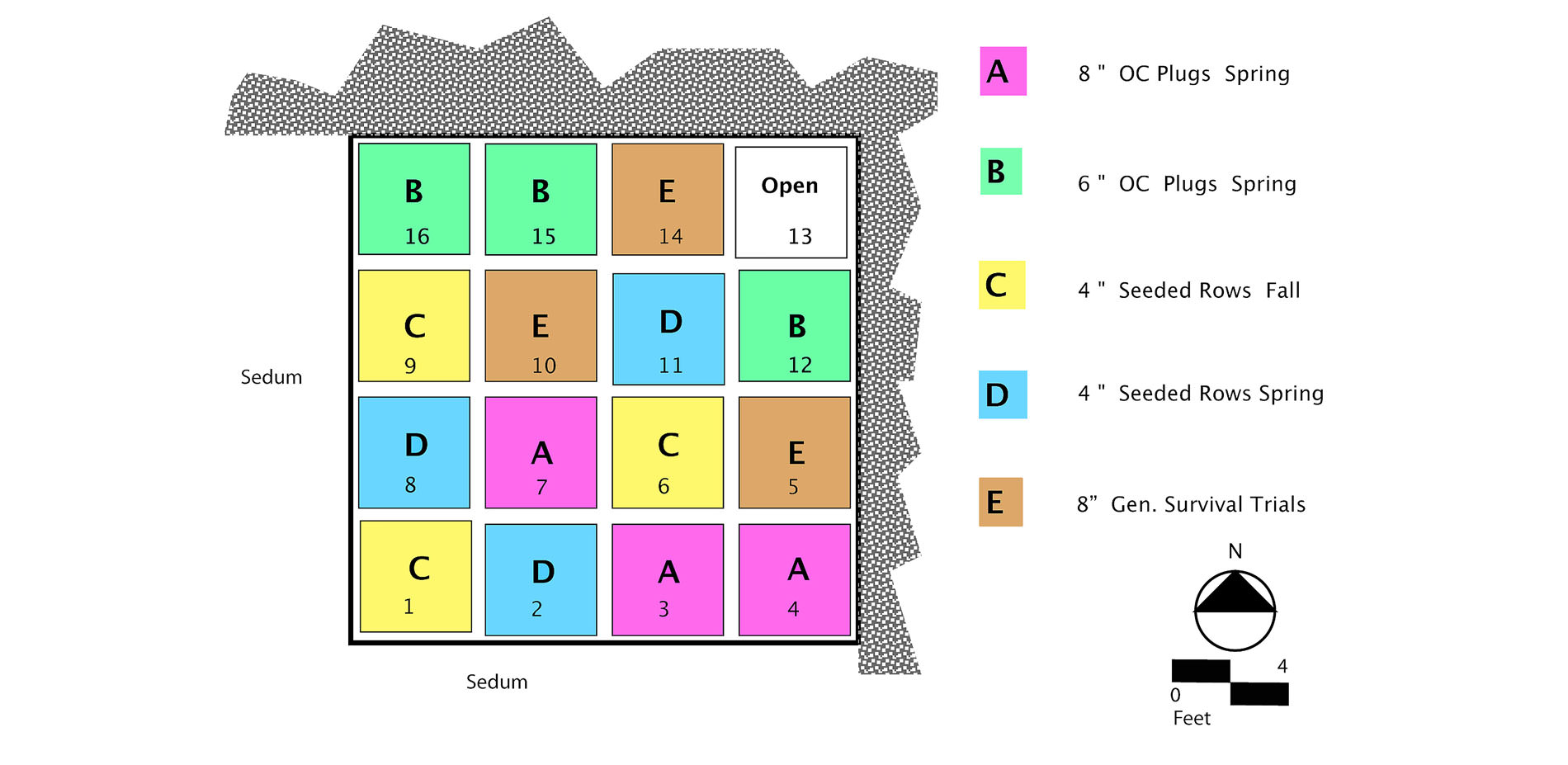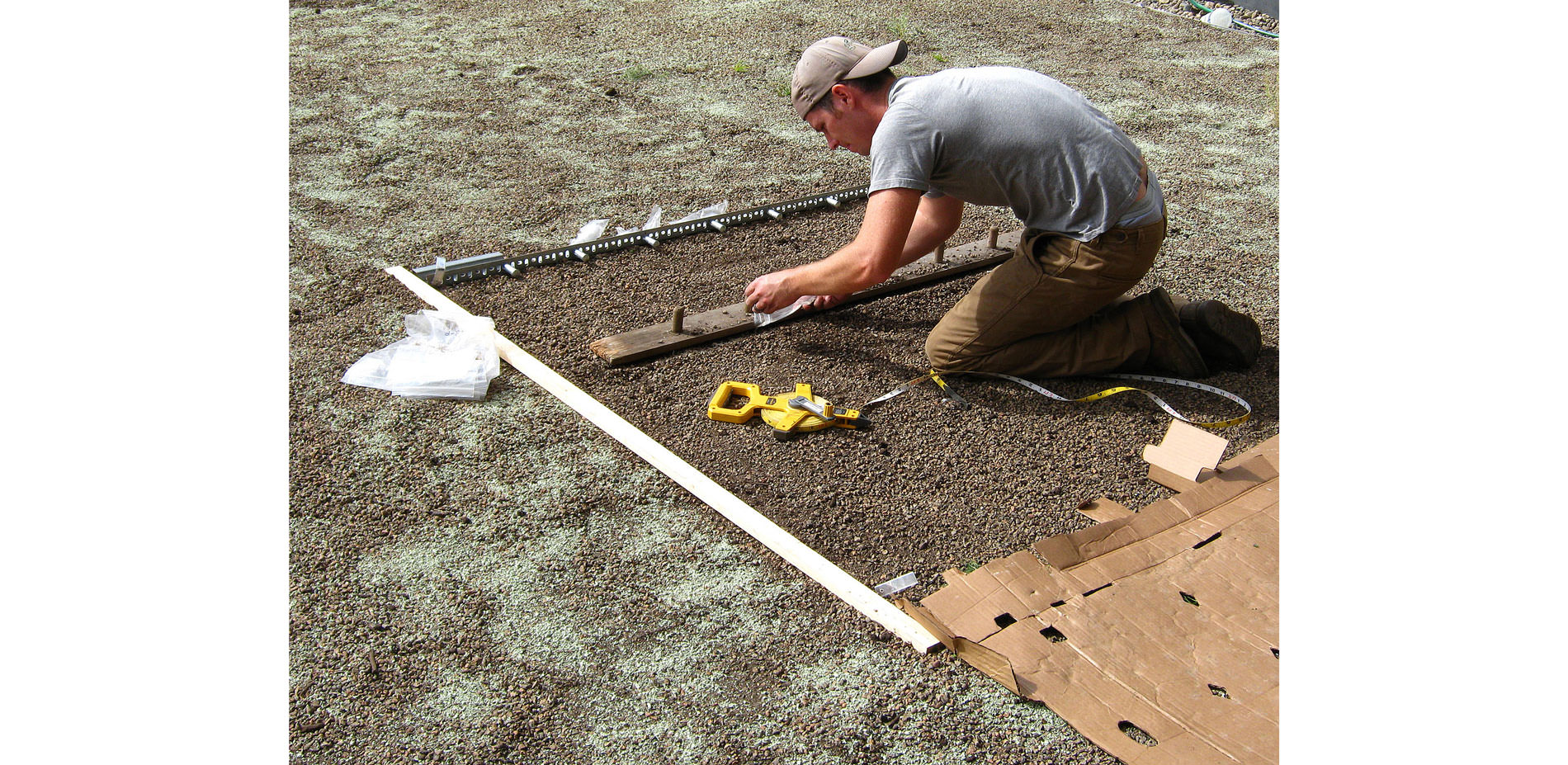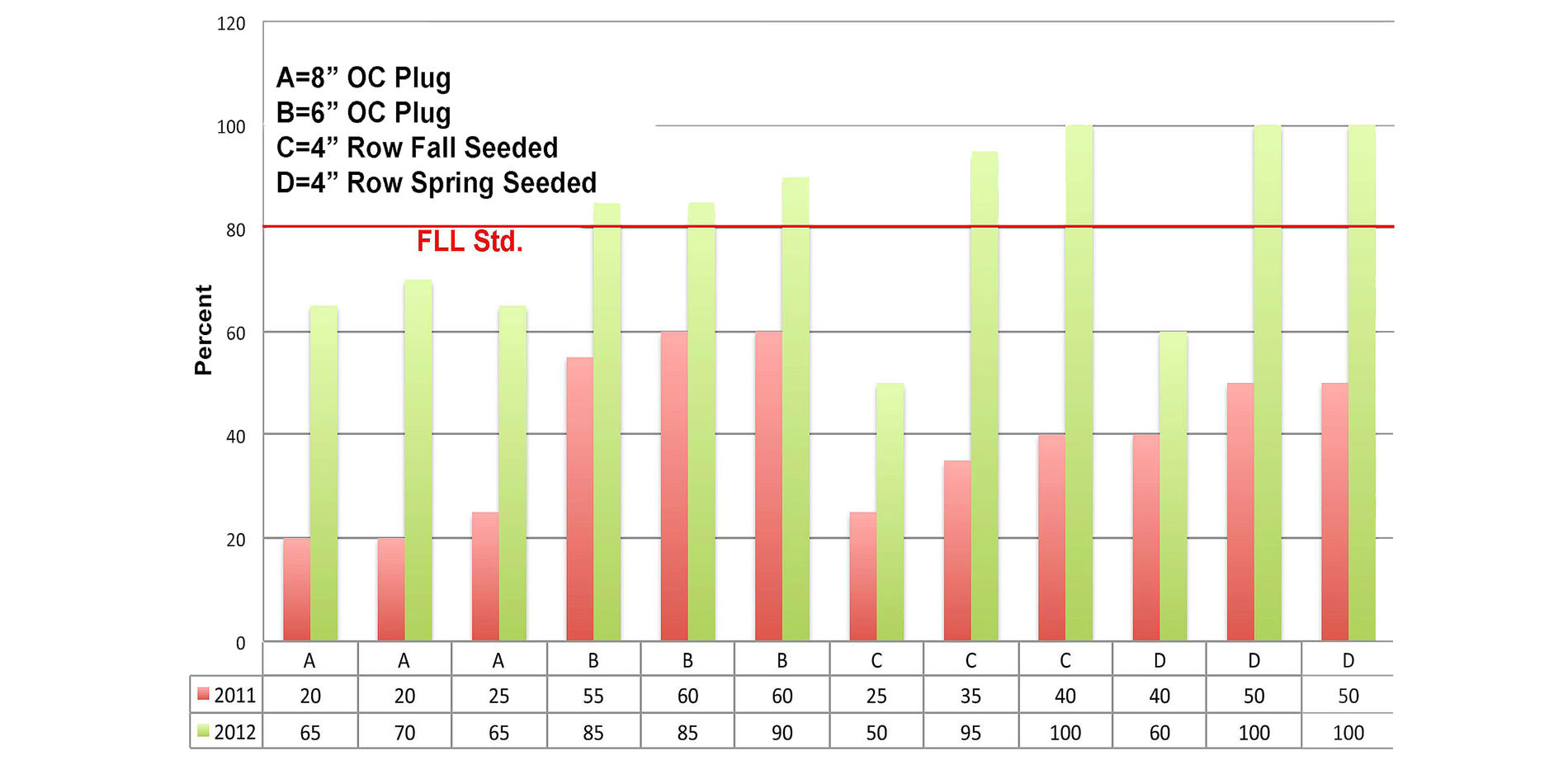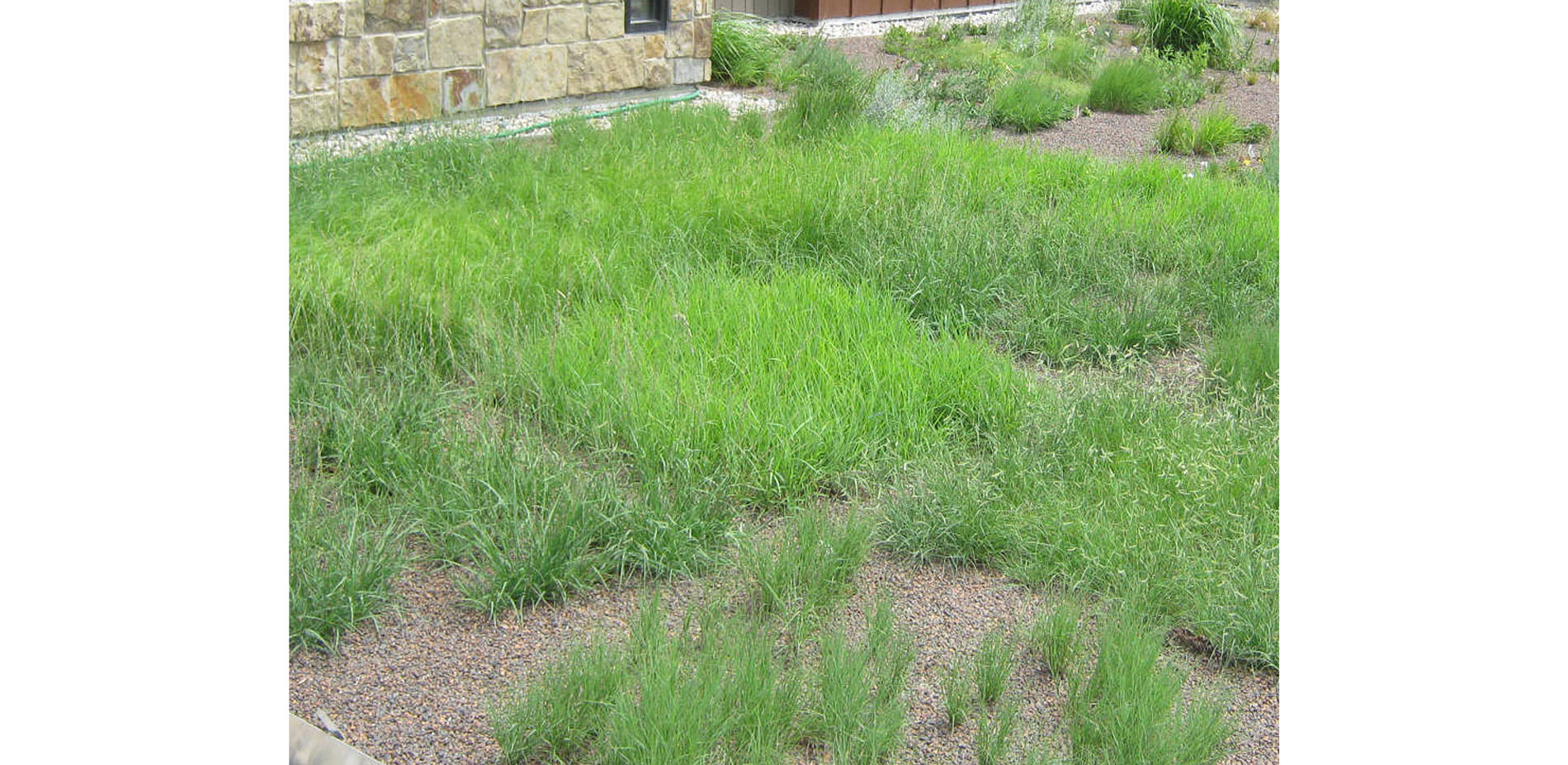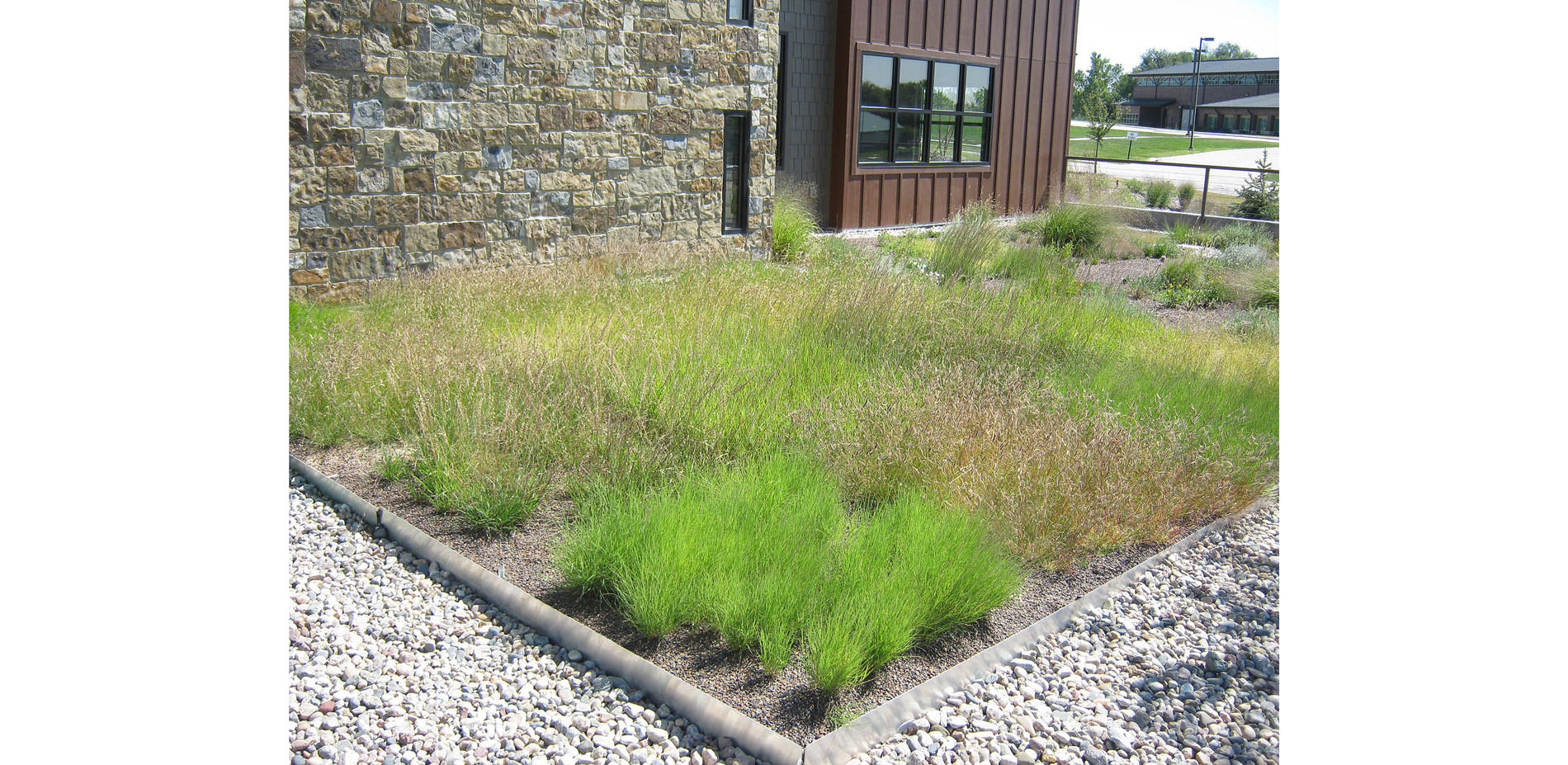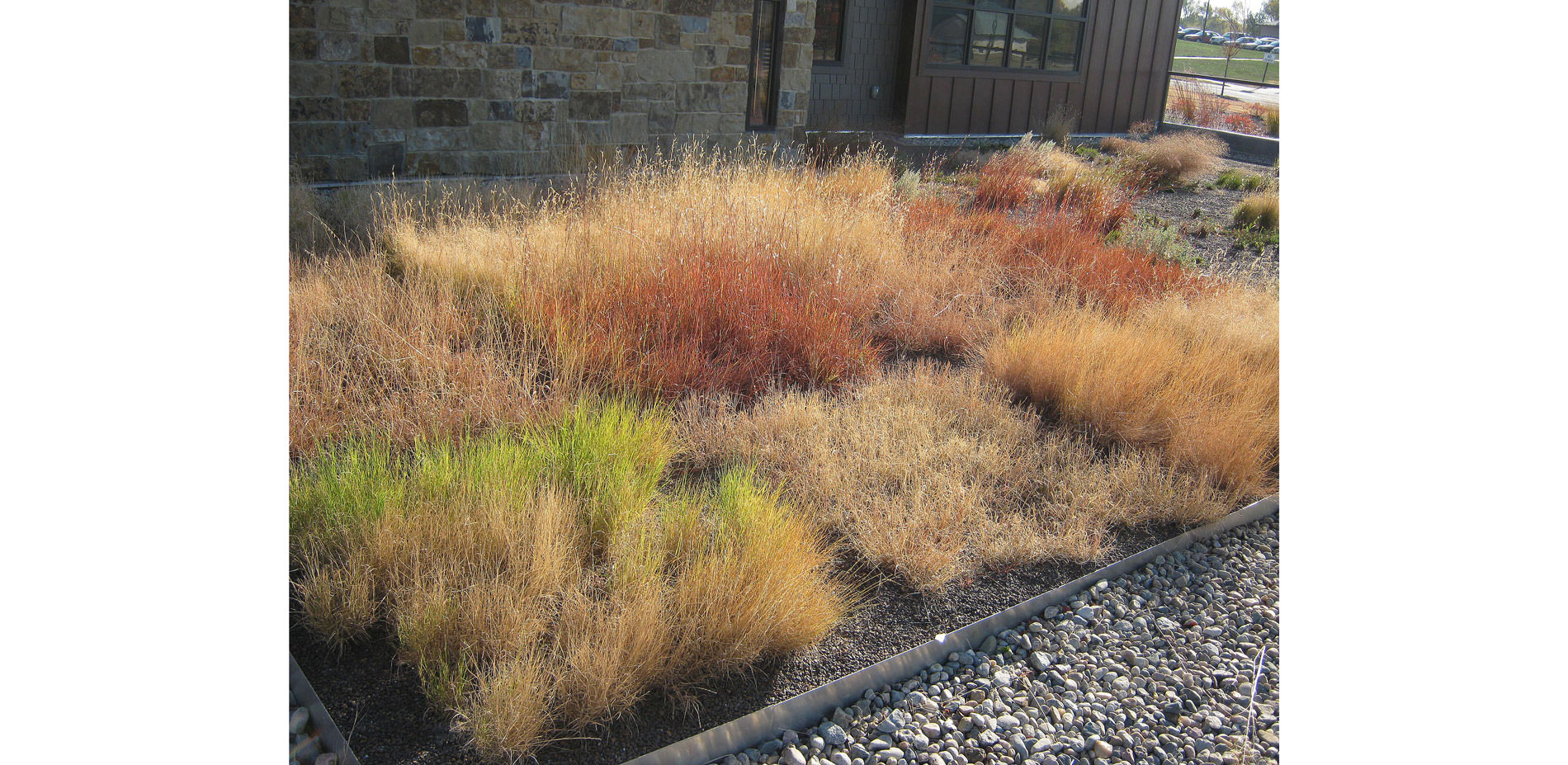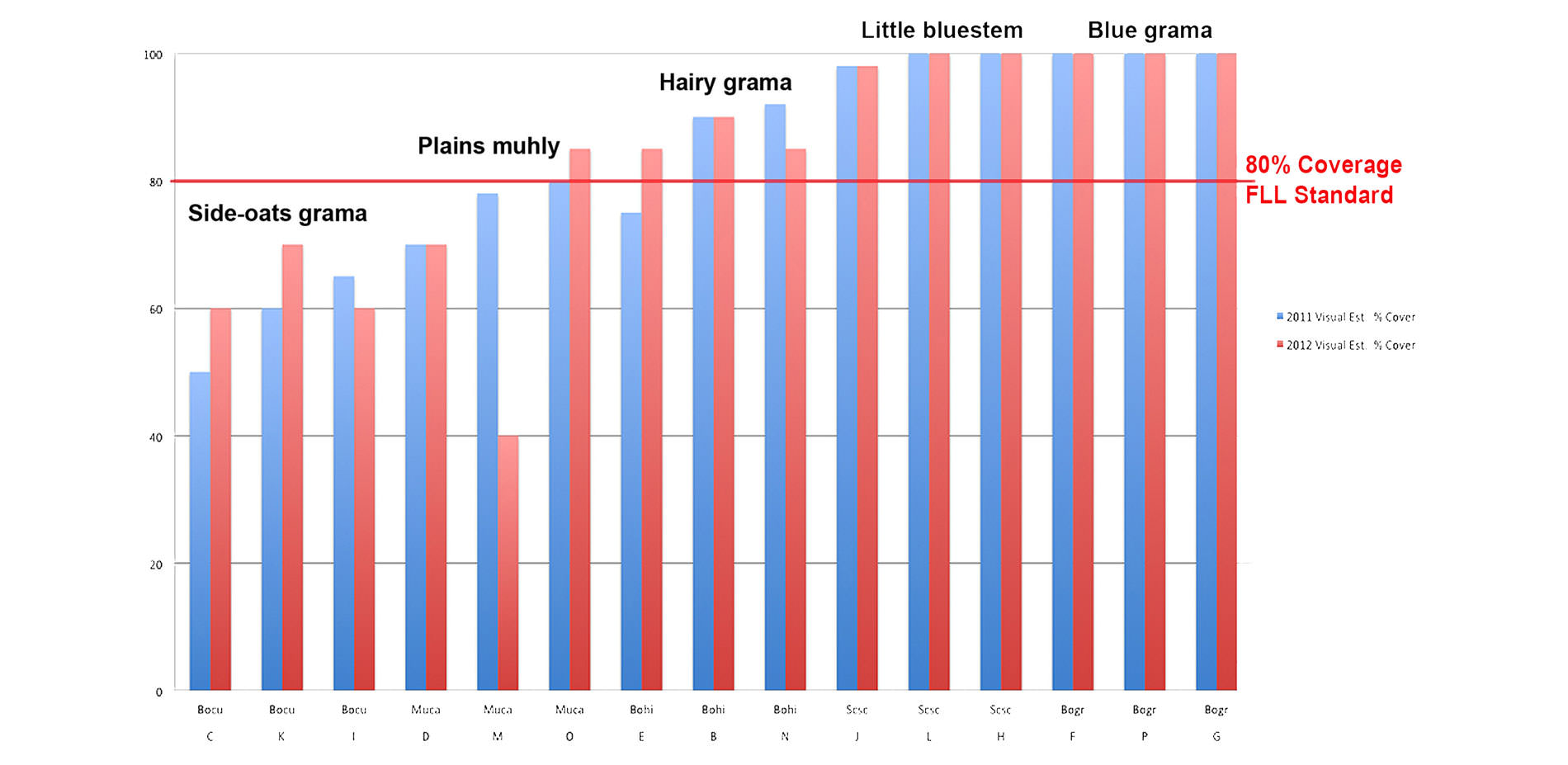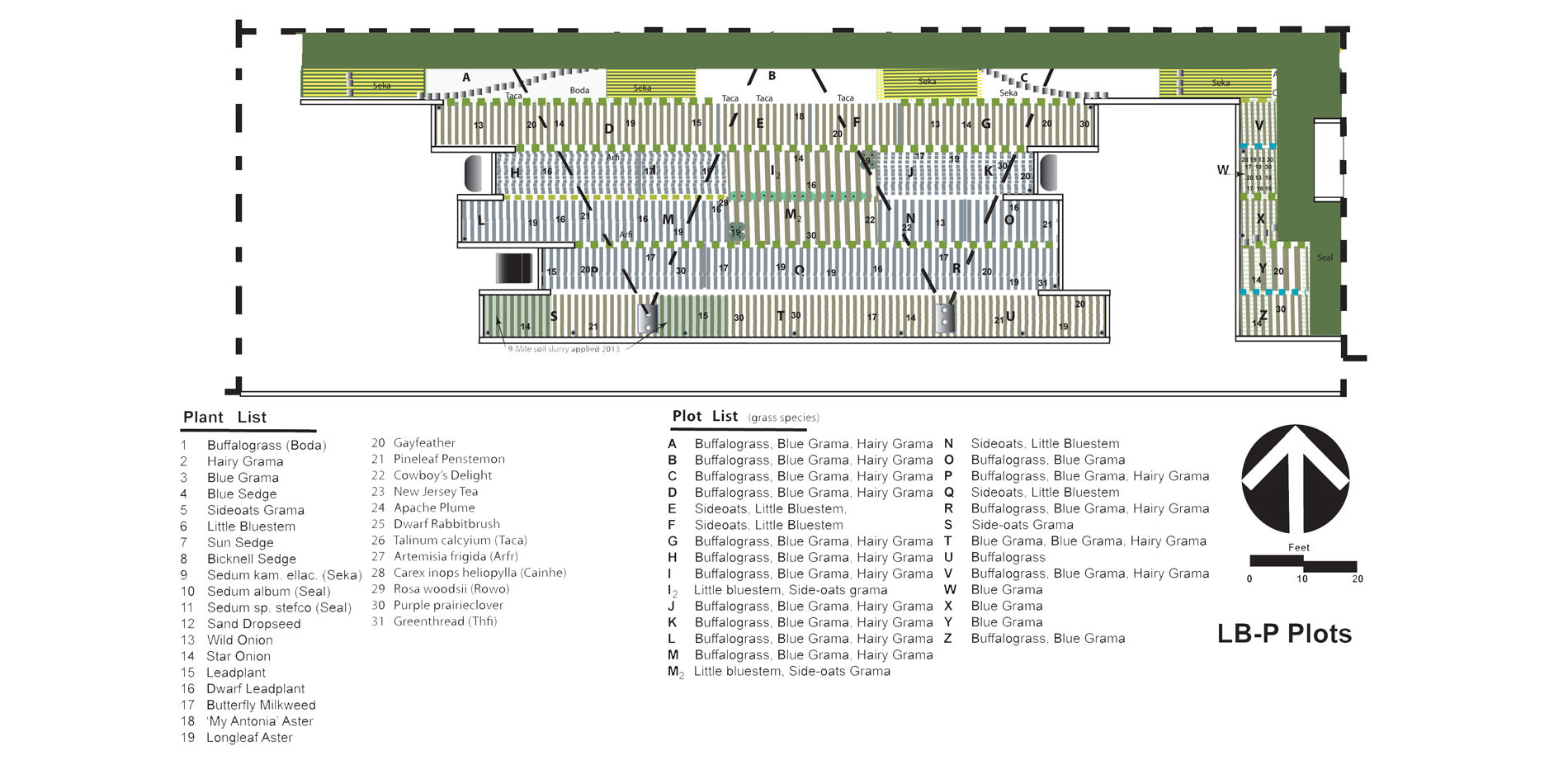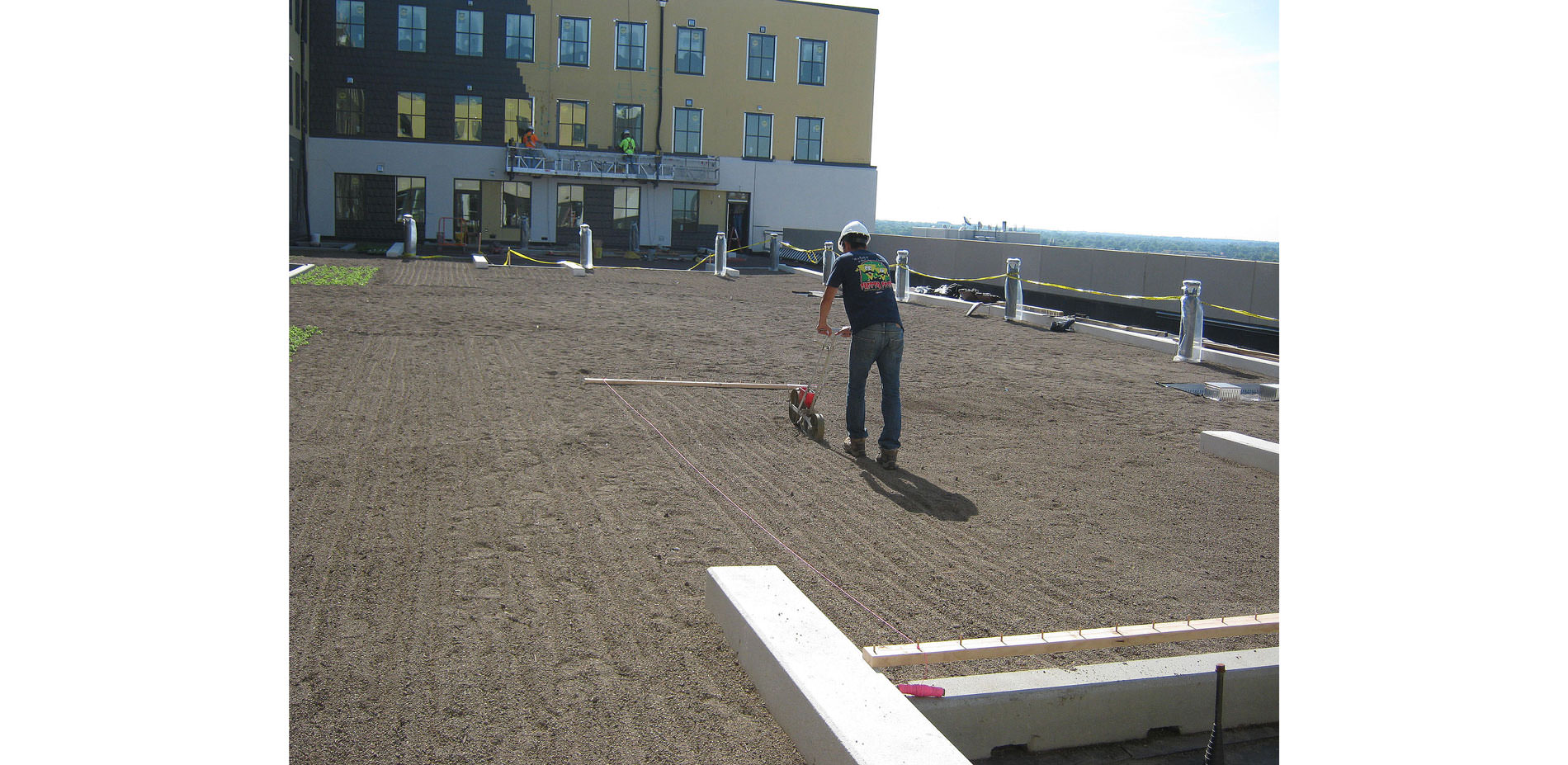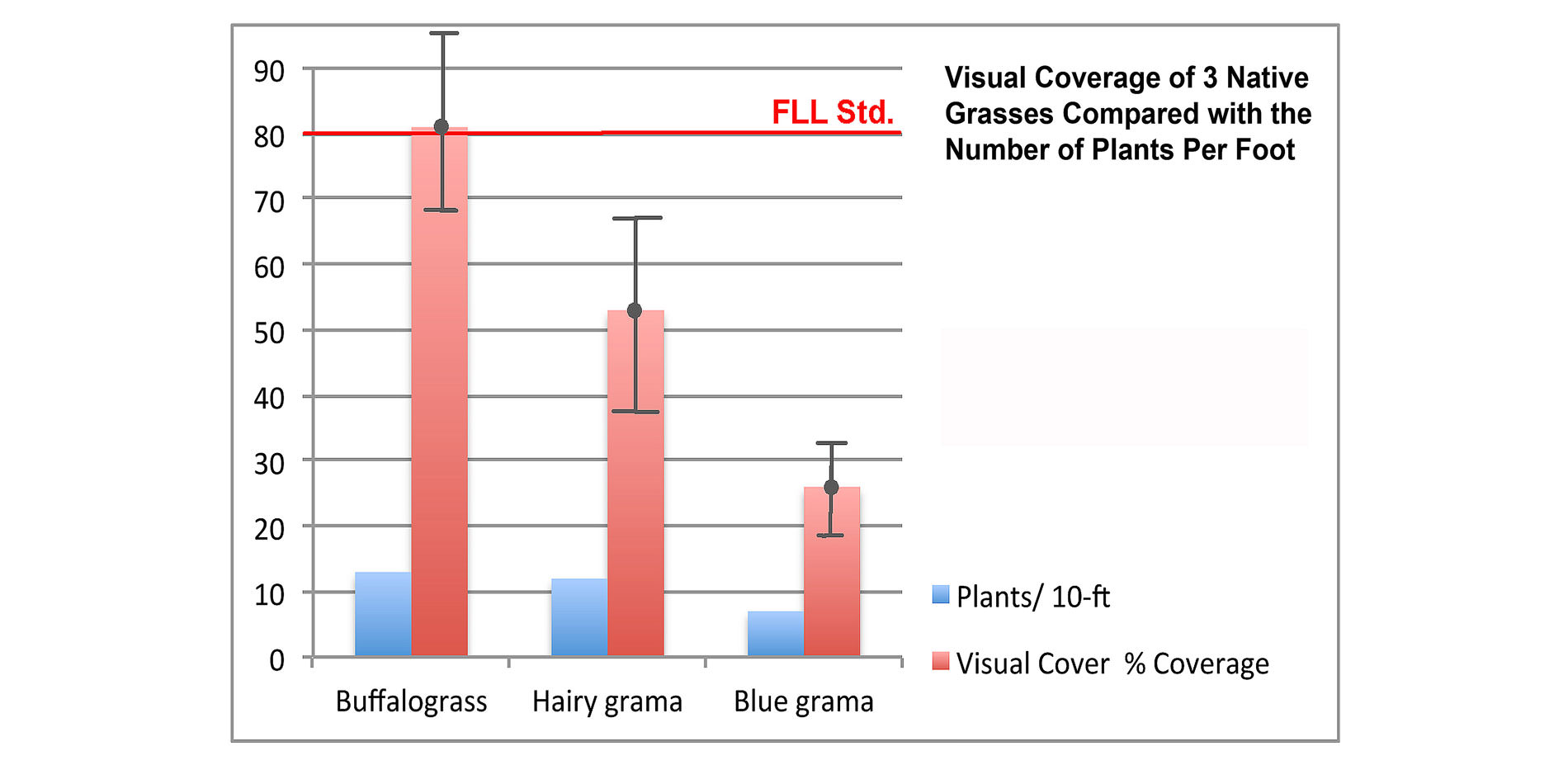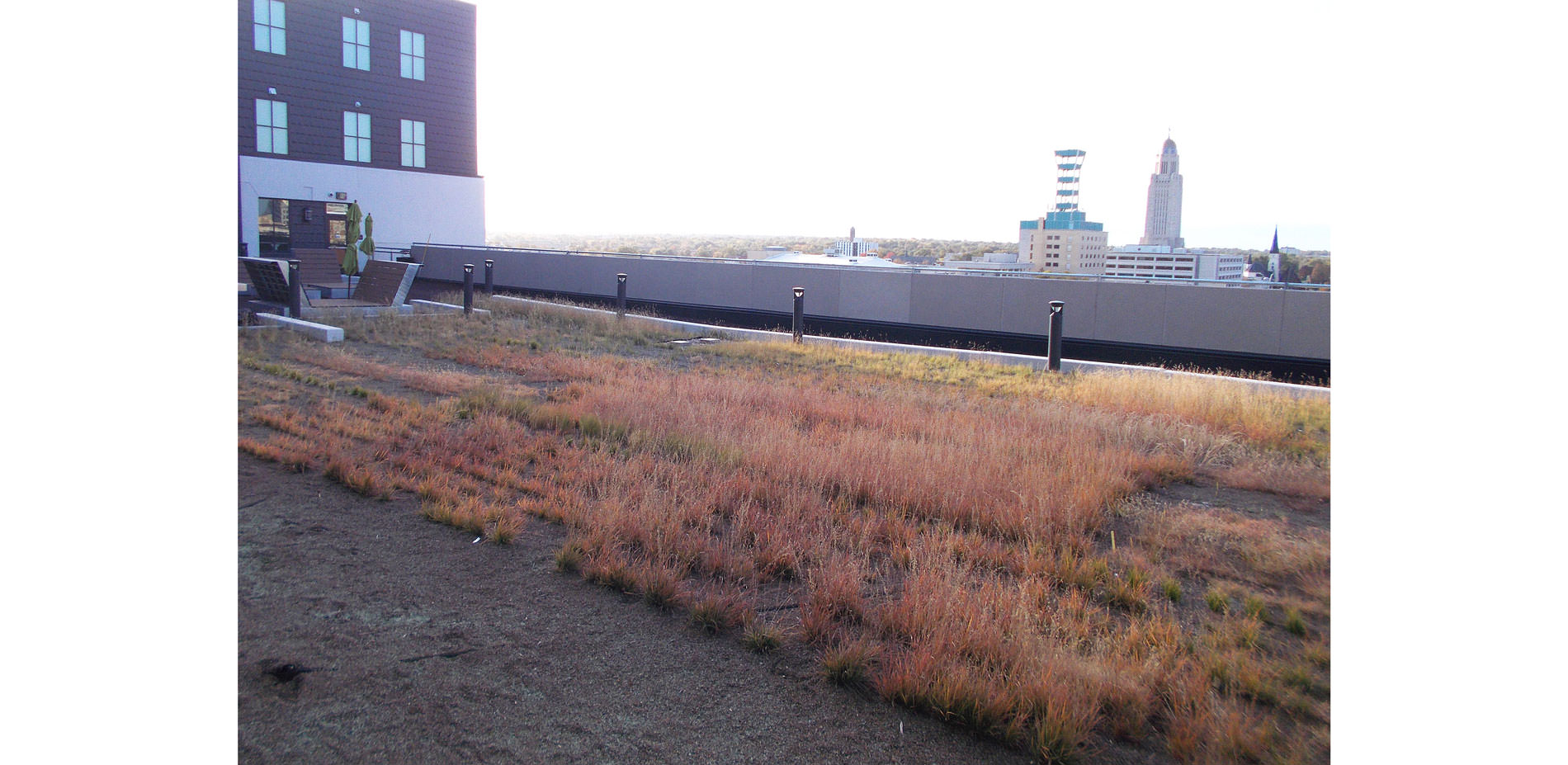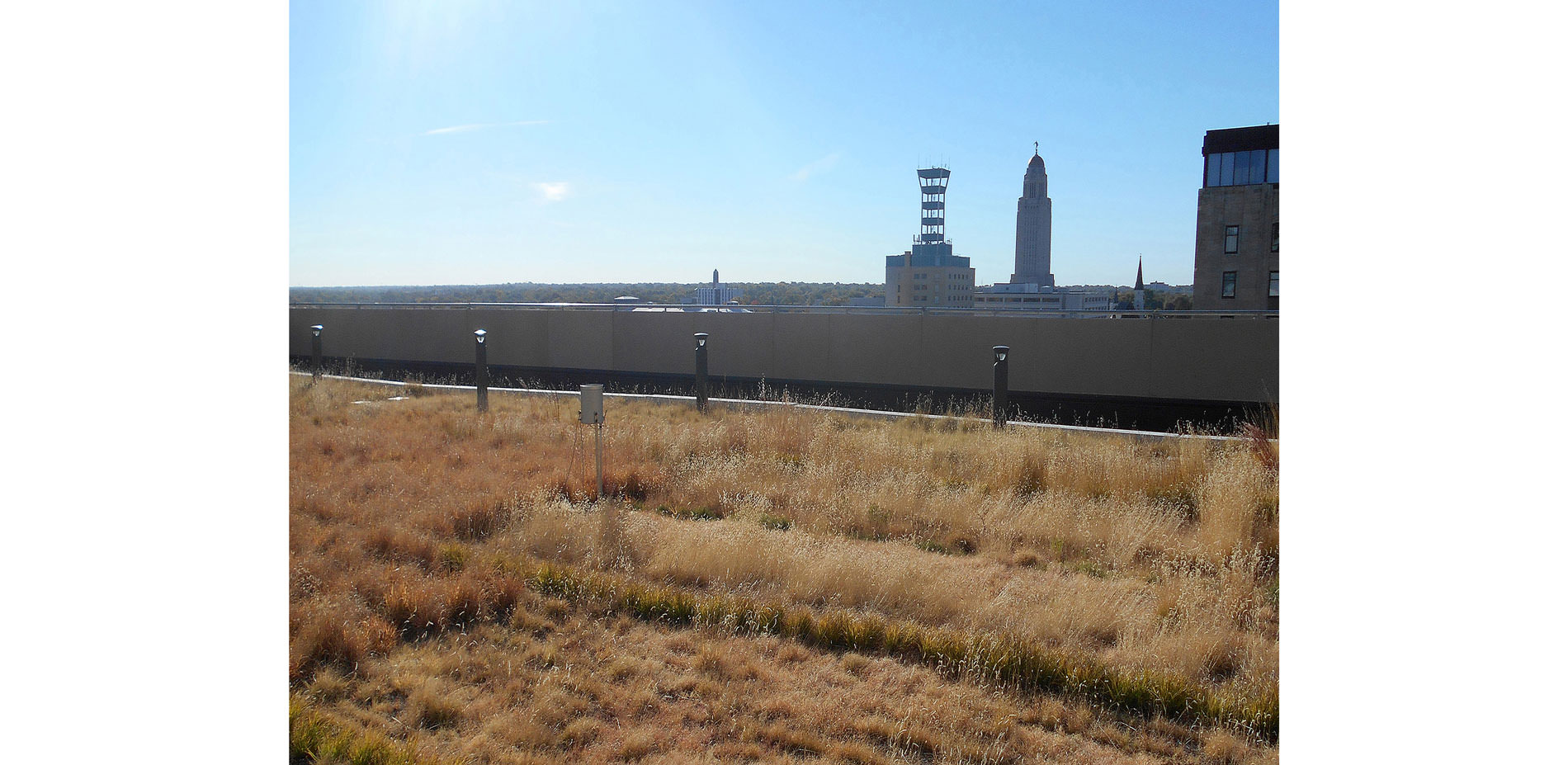Seeding Green Roofs for Greater Biodiversity and Lower Costs
Honor
Research
Lincoln, NE, USA | Richard Sutton, FASLA | Client: Sandhills Publishing, Inc. Arbor Day Foundation Tetrad Property Group, LPS NRD, & Lincoln Urban Development
It checked the boxes on methodology—clarity, analysis, and update. It told the story well.
- 2017 Awards Jury
PROJECT STATEMENT
Green roofs promise controlled runoff and reduced heat loads but current reliance on exotic sedums belies biodiversity. Furthermore, because a green roof is added as a premium, means it often fails to survive value engineering and never gets built. This research examined a suite of materials and techniques to improve and enhance establishment and use of native grasses on green roofs. An easily adopted, innovative procedure for planting fluffy-seeded native grasses speeded installation. Seeding techniques were shown to reduce green roof costs and expand biodiversity options while meeting the 80% FLL coverage standard in two or less years.
PROJECT NARRATIVE
Problem Description
While vegetated layers on green roofs must adapt to extreme temperature, drought, and wind, they must also quickly cover and stabilize growing substrates. After establishment, plants must limit wind scour and self-heal gaps with creeping and rooting stems or by reseeding. Currently mono-generic, creeping species of Sedum, predominate on green roofs and are most often hand-plugged into substrate or placed via expensive pre-grown trays or mats. In a few cases Sedum is sown as live sprigs, but requires intensive establishment. Plugged Sedum, depending on its initial size and spacing, may take two years or more to meet the 80% FLL, industry coverage standard.
Befitting of their diverse habitats, some native grasses such as blue grama, sideoats grama and little bluestem are already plugged on green roofs. Given that prominent, award-winning green roof examples like the LDS Conference Center, Vancouver’s Convention Centre, and the Chicago City Hall, all feature native grass plugs that have self-seeded, and filled gaps, it is odd that green roofs in North America are rarely established using native grass seed.
Furthermore, other research and LEED referees have suggested that plant diversity on green roofs needs to be more broadly interpreted beyond simple species richness, (e.g., three or four species of Sedum) and extended to functional group diversity, functional trait diversity, phylogenetic diversity and structural complexity. One researcher found diverse and varying plant canopy heights and types improved moisture capture. Native grasses with their different growth habits alone and in combination with forbs have the potential to capture more water than mono-generic Sedum spp.
Lack of research interest on the use of native plants – particularly grasses – and their installation by seeding perhaps has been stymied by widely cited research reporting drought losses of a few natives tested alongside Sedum on a Michigan green roof. However, some researchers question applicability of those results for native grasses because of the shallow substrate depth in which they were grown and insufficient establishment time to withstand drought in the middle of their second-year growing season.
Methods and Materials
This research investigated methods, techniques, and materials for seeding green roofs to native grasses. Its questions and objectives arose in 2007 when a small green roof planted to plugs of native grasses freely reseeded and during the second year readily filled gaps. That experience led to a series of on-the-roof trials and experiments on 3 different cooperators’ roofs spanning three years. Experiments, observations, and techniques on green roofs helped explore and evaluate a suite of independent variables for planting: 1) season, 2) method and 3) spacing. The dependent variables measured included: 1) plant vigor, 2) visual coverage, and 3) material and labor costs for seeding.
Each green roof venue (Table 1) presented its own unique design circumstances related to the cooperator’s goals, site microclimate, construction specifications, and installation that constrained the timing, relationship, and extent of experimental designs and comparisons (Table 2). The green roofs at Sandhills Publishing (SHP) and the Larson Building-Parkhaus (LB-P) were designed as green roofs which incorporated experimental plots.
All plots at all venues were randomly assigned treatments with 6-inch wide unplanted buffer strips. For all venues the estimated visual cover was examined at growing season’s end using one-half square meter quadrat frame and converted to percent visual estimates of cover rounded to the nearest 5%. At SHP, plugged Sedum versus seeded grass consisted of different-sized plots and compared on a square footage basis. Unfortunately differences in substrate depth, site microclimate and planting dates precluded comparisons between roofs.
Innovative Technique
Fluffy seeds aid native grass dispersal, but make them difficult to sow. That problem may be one reason native grasses have not been widely seeded on green roofs. However, pelletizing seeds allowed them be easily, quickly, and uniformly planted at a specified depth using a common garden seeder. While only 5 species of native grass were pelletized and planted, that technique would be suitable for many other native grasses and forbs. Single-row seeders could be paired and fastened to further increase planting efficiency.
Findings
- At ADF Fall 2010 seeding of blue grama was successful but without erosion control it was susceptible to winter scour. At the end of the 2011 growing season, it did not exceed the visual coverage of spring seeding.
- At ADF 4-inch row seeding regardless of date (Fall 2010 or Spring 2011) met or exceeded the coverage of both 2011, 6-inch and 8-inch spaced plugs by the end of 2012.
- At SHP 4 spring-sown grass species in 6-inch rows met 80% coverage in one growing season.
- At LB-P spring sown buffalograss in 6-inch rows met 80% coverage in one growing season.
- At LB-P material and labor costs for Sedum 72-plugs planted at 6-inches O.C. were over 6 times greater than seeding ($5.07/sf versus $0.79/sf). Seeding reached 80% coverage in two growing seasons, while Sedum did not.
- Number of seeds of hairy grama produced per foot in seeded plots was about 90% of that in plugged plots.
Conclusions
Native grass seeding for green roofs:
- Improves coverage times over plugging
- Reduces costs versus plugged sedum when planted as pelletized seed
- Increases biodiversity using the tested species plus many other potential native grasses and forbs (Table 3)
Applicability to Landscape Architectural Practice
Research results have been disseminated in peer-reviewed publications and through presentations to state, regional, and national audiences. Its ideas and conclusions can be widely used, easily specified, and readily adopted by landscape architects who design green roofs. Experimental plots were incorporated in the actual green roof design -- a technique useful for practitioners wishing to monitor planting ideas and outcomes.
Future Research
This research shows the potential to reduce green roof planting costs by about $5 per square foot. However, the major portion of green roof costs (and weight) still resides with growing substrates. To expand green roof installation, especially as retrofits, ways must be found to reduce green roof weight and costs.
PRODUCTS
REEN ROOFS/LIVING WALLS
- Midwest Trading EC-- Substrate
OTHER
- KamTerter, Inc.- Sed pelletizing
